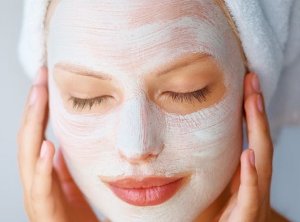 Exfoliation is an important part of any skincare routine. When it comes to at home skincare, most women prefer mechanical exfoliation that involves scrubbing the skin with a DIY or over-the-counter scrub. If you need deeper exfoliation, you can try chemical peels containing acids or enzymes. For example, Ukrainian beauty brand Cocos offers a line of chemical facial peels that are specifically designed for at home use.
Exfoliation is an important part of any skincare routine. When it comes to at home skincare, most women prefer mechanical exfoliation that involves scrubbing the skin with a DIY or over-the-counter scrub. If you need deeper exfoliation, you can try chemical peels containing acids or enzymes. For example, Ukrainian beauty brand Cocos offers a line of chemical facial peels that are specifically designed for at home use.
There are two main types of exfoliation: mechanical and chemical. Mechanical exfoliation involves using an abrasive that physically removes dead cells, excess sebum, dirt and grime from the skin surface. Chemical exfoliants contain various chemicals (alpha hydroxy acids, beta hydroxy acids, enzymes) that loosen the bonds between dead cells, allowing them to ease away. Additionally, chemical peels usually have antibacterial and anti-inflammatory properties that enable them to treat acne.
Depending on the type and concentration of acids used in chemical peels, they are classified by the depth of action into superficial, medium depth, and deep peels. They affect the superficial, medium and deep layer of the epidermis, respectively.
Superficial chemical peels are considered the best for at home use because they are the safest. Such peels affect only the outermost layer of the epidermis. Besides, they have a whole range of positive effects on the skin alongside exfoliation and cleansing. Superficial peeling lightens the skin, reduces pigmentation, helps to get rid of fine lines and reduce deeper wrinkles, combats photoageing, etc.
Alpha and beta hydroxy acids (AHAs and BHAs) that are used for superficial peeling include glycolic acid, lactic acid, succinic acid, mandelic acid, salicylic acid, and others. They can be used individually or combined together to achieve different effects. All acid combinations and concentrations are thoroughly tested to make sure they are balanced and won’t cause any damage to the skin.
Ukrainian beauty brand Cocos offers 6 products for superficial chemical facial peeling that can be used both in beauty salons and at home. They are designed for various skin types, contain 10% of acid, have pH 3.5, and are buffered with amphoteric amino acids that allow to optimize their efficiency while minimizing possible damage to the skin. Each chemical peel by Cocos has its own range of beneficial properties and effects.
For instance, glycolic peel has a pronounced anti-age effect. It makes the skin smoother and lighter, normalises sebum secretion, and stimulates skin cell regeneration and metabolism. Glycolic peel 10% by Cocos is designed to take care of oily, problem, and mature (ageing) skin, as well as skin suffering from pigmentation.
Lactic peel has a very mild effect. It helps to cope with some common skin problems such as dehydration, seborrhoea, enlarged pores, fine lines and minor wrinkles, photoageing, acne and acne scars, hyperkeratosis (thickening of the outermost layer of the epidermis) and hyperpigmentation, sagging skin, and increased sebum secretion. Thanks to its gentle effect, lactic peel is safe for all skin types, including overly sensitive skin. It can even be suitable for those who are allergic to other types of chemical peel.
Lactic & succinic peel combines the effects of lactic and succinic acids. It is stronger compared to lactic peel, but not as strong as most other types of chemical peel. Lactic & succinic peel is considered suitable for sensitive and ageing skin. It helps to keep the skin hydrated and combats minor signs of skin ageing. In addition, it produces a rejuvenating effect, improves complexion, helps to tighten pores, normalises the hydro-lipid balance of the skin, eliminates acne and prevents acne scars, lightens the skin, and reduces inflammation.
Mandelic peel is probably the mildest of all chemical peels produced by Cocos. It can even be used in summer, when chemical peeling is generally not advised because it increases the skin’s photosensitivity. Mandelic peel is designed to normalise the skin’s hydro-lipid balance, combat acne, pigmentation and freckles, improve skin elasticity, and reduce fine lines. The product has an antiseptic, antioxidant, keratolytic, keratoplastic, comedolytic, whitening, and smoothing effect.
Salicylic peel in based on salicylic acid. This beta hydroxy acid is on the WHO Model List of Essential Medicines, it is used to treat a wide range of skin conditions including acne, psoriasis, seborrhoeic dermatitis, keratosis, warts, dandruff, and others. Salicylic peel deeply cleanses pores and prevents them from clogging, eliminates acne and acne scars, produces a disinfectant effect, stimulates skin renewal, makes the skin softer and smoother, improves complexion.
Finally, AHA fruit acid peel is based on a blend of alpha hydroxy acids that includes glycolic acid, lactic acid, citric acid, and tartaric acid. The product has an overall positive effect on the skin. It makes the skin soft and velvety smooth, improves complexion and skin elasticity. This peel is great for taking care of dry, oily and mature skin. It helps to combat pigmentation and dull complexion.
All superficial facial peelings by Cocos come in small 30 ml bottles. They are affordable, which makes them perfect for regular at home use. As a rule, to achieve a visible result, you’ll need 10–12 weekly procedures. Cosmetologists recommend that you use chemical peels in fall or winter to prevent sun damage. It is very important that you strictly follow the directions in the product leaflet to keep your skin healthy and undamaged.
For example, chemical peels should not be applied to sunburnt, dehydrated, cracked, flaking, peeling, or otherwise damaged skin. You also shouldn’t combine mechanical and chemical peeling. Before applying a chemical peel, you need to cleanse your skin with a product that has a neutral pH level. If you use soap or other cleansers with an alkaline pH, it may reduce the effect of acids. After the peeling, you should apply a nourishing or revitalising facial cream or serum, or use a peel-off alginate mask to replenish moisture and soothe the skin.
